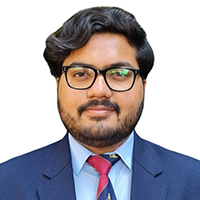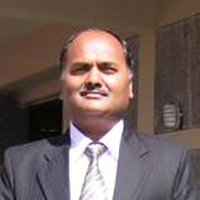By Achyut Tiwari and Ashok Kumar Gupta
Engineers around the world routinely study structure longevity to learn about the methodologies of long-lasting structures [2]. This concept relates to the Lindy effect — the idea that the longer something has existed, the longer it will continue to exist (it is thus a good heuristic for selecting a set of engineering solutions). Structures are built with a variety of methods that depend upon the type of structure and its dynamic usages. One major element that frequently appears in modern buildings is the use of reinforced concrete (RC) deep beams. Here, we introduce ensemble learning to predict the shear strength of RC deep beams.
Ensemble learning is a powerful machine learning technique that combines the predictions of multiple base models to enhance the overall performance and robustness of the system in question. In contrast to the statistical ensembles of statistical mechanics—which are typically infinite in nature—machine learning ensembles comprise a definite and finite collection of distinct models, which usually exhibit a significantly more adaptable arrangement. Ensemble learning can thus improve the prediction of shear strength in RC deep beams. Various complex factors influence the behavior of these beams, including compressive and shear stress, shear strength, and geometric properties.
Let us denote the true shear strength of an RC deep beam as \(y\) and the predicted shear strength from an individual machine learning model as \(y_\textrm{pred}\). The ensemble learning approach aggregates predictions from multiple models to obtain a more accurate and reliable prediction in the form of
\[y_\textrm{ensemble}=\frac{1}{N}\sum^N_{i=1} y_{\textrm{pred},i},\]
where \(N\) is the number of base models in the ensemble.
Scientists may employ a variety of machine learning models in this scenario, including artificial neural networks, decision trees, support vector machines, adaptive boosting, gradient boosting, extreme gradient boosting, random forest, and voting regressors. Each of these models contributes to the ensemble's prediction of shear strength. Comparable research over the past ten years has yielded encouraging outcomes [3].
One of ensemble learning’s major drawbacks is its black box models, which provide minimal insights into the way in which the prediction is made. However, the recent development of SHapley Additive exPlanations (SHAP) has helped users understand the contributions of individual features (parameters) during prediction [1].
The incorporation of ensemble learning into the study of structure longevity offers a promising avenue to enhance predictive accuracy in the complex domain of RC deep beams. The ensemble approach harnesses the collective strength of diverse machine learning models, and the emergence of SHAP provides newfound transparency and bridges the gap between predictive power and interpretability. This synergy introduces a progressive path to integrate dynamic systems and advance our understanding of structure longevity.
References
[1] Lundberg, S.M., & Lee, S.-I. (2017). A unified approach to interpreting model predictions. In Advances in neural information processing systems 30 (NIPS 2017). Long Beach, CA.
[2] Mehta, P.K., & Monteiro, P.J. (2014). Concrete: Microstructure, properties, and materials (4th ed). New York, NY: McGraw-Hill Education.
[3] Tapeh, A.T.G., & Naser, M.Z. (2023). Artificial intelligence, machine learning, and deep learning in structural engineering: A scientometrics review of trends and best practices. Arch. Comput. Methods Eng., 30(1), 115-159.
 |
Achyut Tiwari is the founding president of the Jaypee University of Information Technology (JUIT) SIAM Student Chapter. His research combines machine learning and dynamical systems to apply computational methodologies in bioinformatics and other fields of engineering. Tiwari is a member of SIAM and the Association for Computing Machinery. |
 |
Ashok Kumar Gupta is a professor of civil engineering and a Dean of Academics & Research at JUIT. He has nearly 40 years of experience in teaching and research. Gupta received his Ph.D. from the Indian Institute of Technology Delhi. |